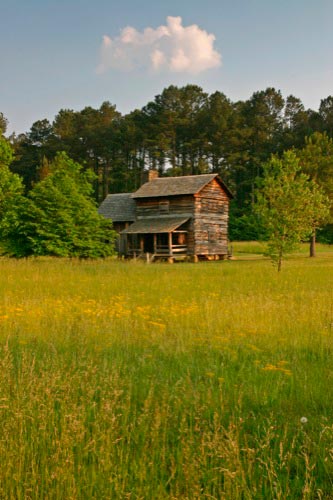
Photo courtesy Georgia State Parks
During the ice age and countless years before white men set foot in North America, it is believed that a resilient people crossed a land bridge across the Bering Sound from Siberia into what is now Alaska.
Proficient fishermen, hunters and farmers, they flourished in a variety of environments and thrived until their lifestyles and often their lives were threatened with the influx of Europeans beginning in the 16th and 17th centuries. Throughout the years, wars, relocation programs, exposure to European illnesses and more drastically diminished the Native American population.
Today, there are more than 500 recognized tribal governments in the United States. Several museums and archaeological sites keep their stories, heritages and cultures alive.
Bank groups can hear inspiring and emotional stories through exhibits and professional storytellers.
But don‘t just observe; schedule time with live demonstrations and partake in educational seminars and hands-on classes. Check out the ceremonial events that these museums offer just for you.
Alaska Native Heritage Center
Anchorage, Alaska
This heritage and education center, located in the city where most Alaska native people live today, not only educates visitors from all over the world about the people who have called this place home for thousands of years but also provides opportunities for urban native students to remain connected to their families’ traditions.
“Our center shares the rich heritage of Alaska’s 11 major cultural groups through storytelling, authentic native song and dance, artist demonstrations, native games demonstrations and more,” said David Farve, public relations specialist.
Among the exhibits and collections is the Hall of Cultures, where a variety of Native American cultures showcase their individual styles of handmade crafts, such as dolls, parkas, moccasins, baskets, hair ornaments and masks made with beads, beaver fur, wood, moose hide, caribou tufting and more.
Visitors are treated to poignant dancers who offer not only entertainment but also lessons on life.
In the summer, groups will want to take advantage of the Raven’s Call Café, where freshly caught fish, game burgers and chowders are on the menu.
907-330-8000
www.alaskanative.net
Pueblo Grande Museum and Archaeological Park
Phoenix
The Hohokam people settled Pueblo Grande around A.D. 450 and lived in the area until about 1450, cultivating approximately 10,000 acres with cotton, corn, bean and squash crops.
“They are most known for their extensive canal system, controlling the flow of water for other smaller communities. Many of the canals were so well engineered that early settlers of current Phoenix used the canals for their own farming needs,” said Stacey Mays, visitors services supervisor. “In fact, many are in use today — unbelievable, considering they did it all without modern engineering equipment and without beasts of burden.”
An interpretive trail includes a recreational ball court, replicated housing systems and an interpretive agricultural garden. Inside, a museum hosts three galleries: the main exhibit showcasing the life and culture of the Hohokam, a hands-on gallery specially designed for children and a changing gallery that offers insight into aspects from archaeology to crafts.
“These people were also known for their beautiful red-on-buff pottery with intricate designs. They also made shell pendants, rings and bracelets. Some of their pieces are on display in the museum galleries,” said Mays.
The museum, opened in 1929, offers its own history in an award-winning introductory video.
877-706-4408
www.pueblogrande.com
Mille Lacs Indian Museum
Onamia, Minnesota
The interactive Mille Lacs Indian Museum portrays the importance of the Mille Lacs Indians, one of seven Ojibwe communities, in Minnesota history. “Visitors learn how this resourceful band settled in the northern part of our state, about their fate during the treaties that were made and broke, and what their life is like today,” said Bradley Sam, program supervisor.
The heart of the museum lies in the Four Seasons Room. Groups are given a tour of a diorama depicting the life of the Mille Lacs from 1750 through 1800 and told the importance of the different seasons.
“Our exhibit hall is where we discuss our past and how we define our culture and community with dance, music and language,” said Sam.
The hall also offers a poignant veteran’s tribute, depicting the significance of military service within the Native American community.
“We continue with an exhibit of how we live as a nation within a nation and describe our status as a sovereign government. Finally, we talk about making a living and how we’ve stayed afloat financially,” said Sam.
Housed in a cedar building designed by a Mille Lacs elder that features a copper dome and canopy along with an arched window reflecting the adjacent Lake Mille Lacs, the museum is also the place to find American Indian gifts from Mille Lacs artisans in the restored trading post.
Sam added, “Groups are invited to join us in our monthly craft workshops, where they can make a variety of items from mittens to baskets.”
320-532-3632
www.mnhs.org/millelacs









